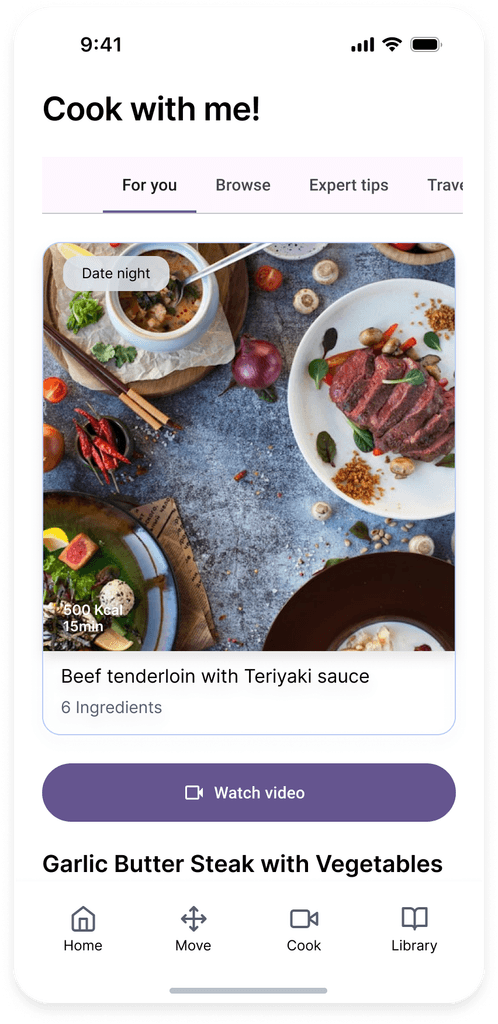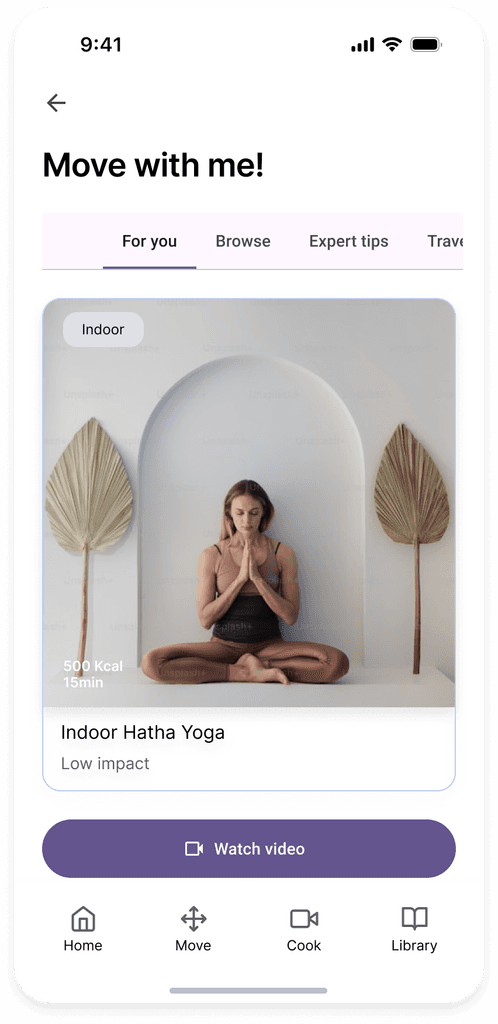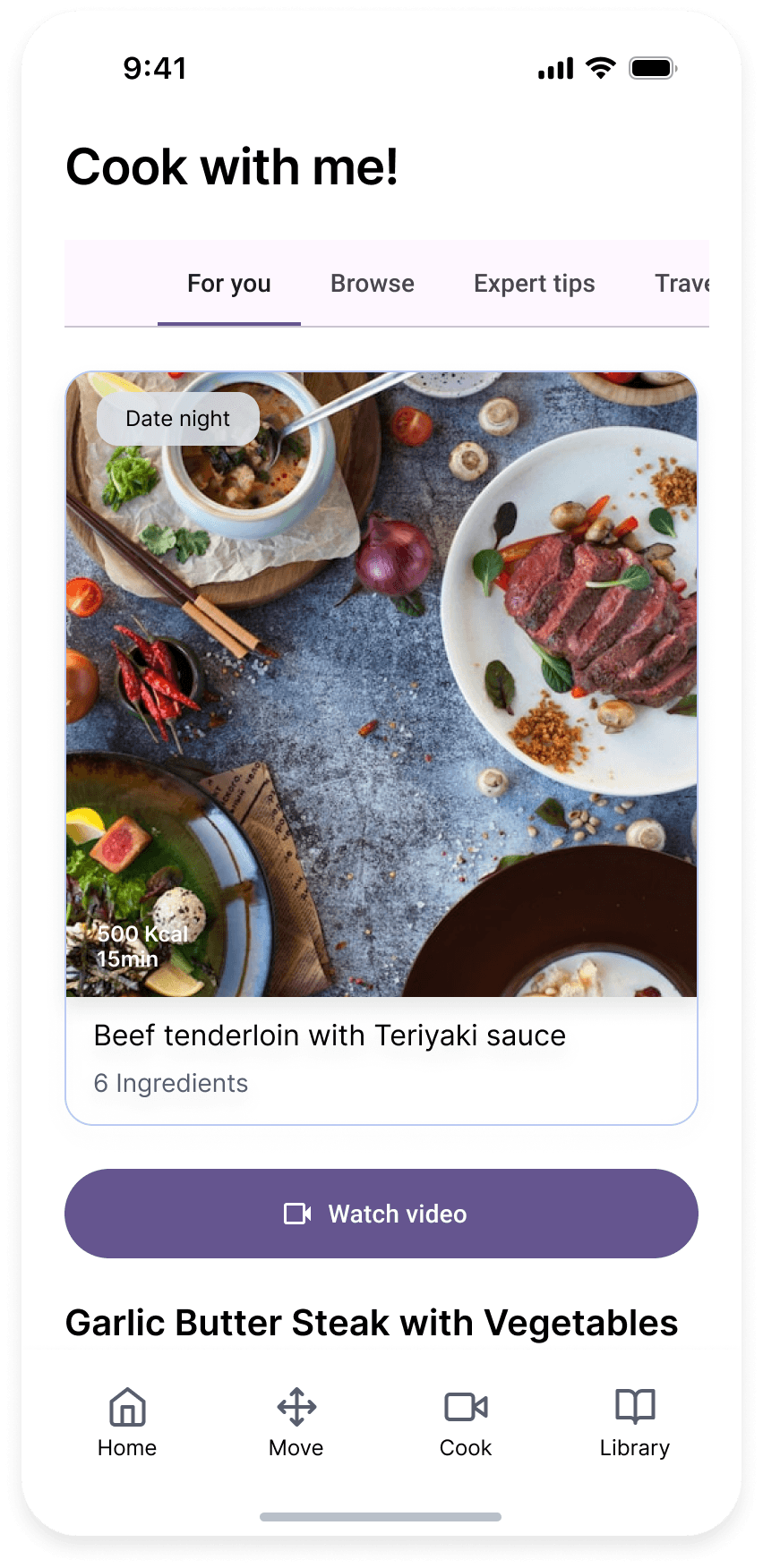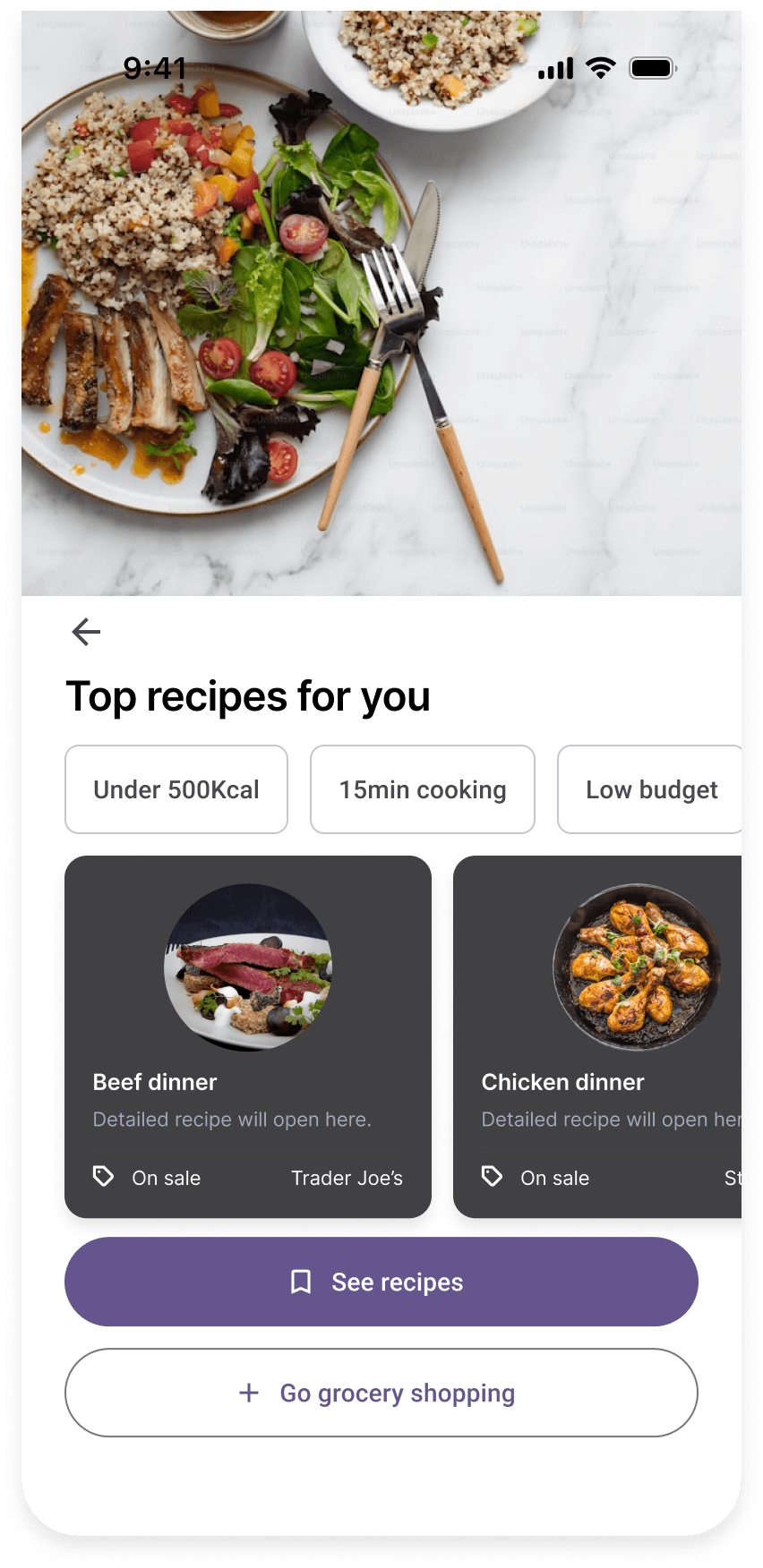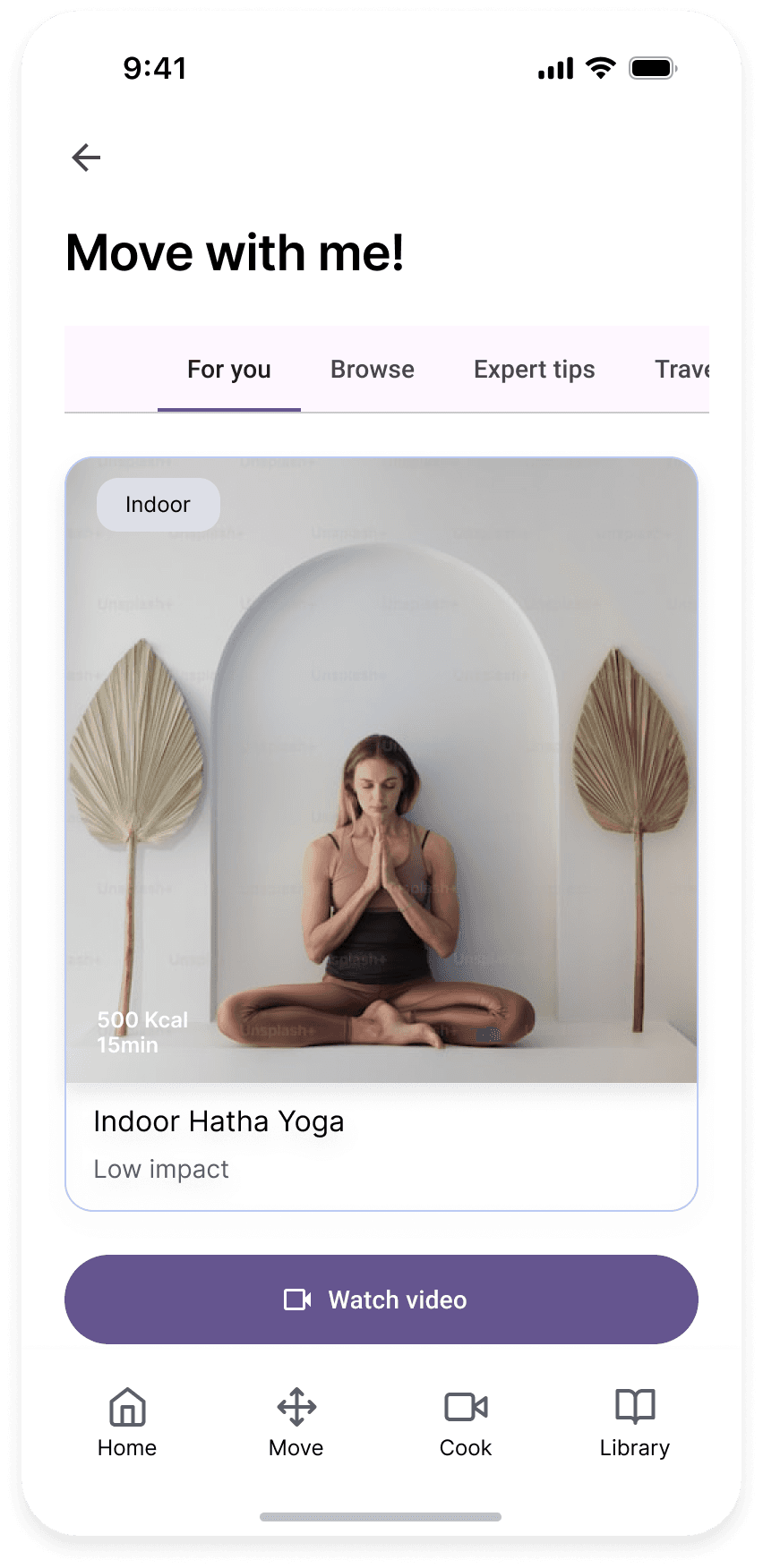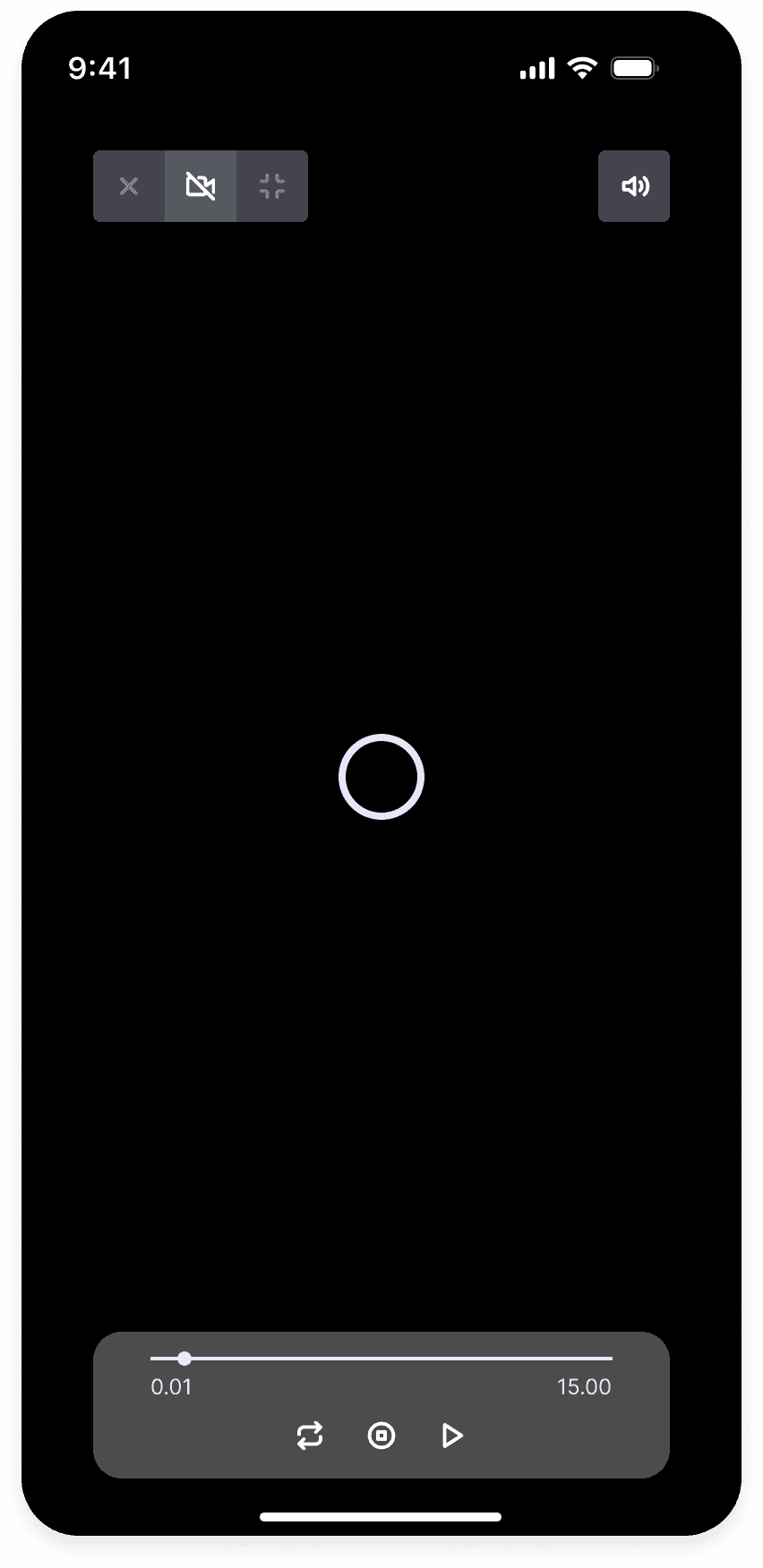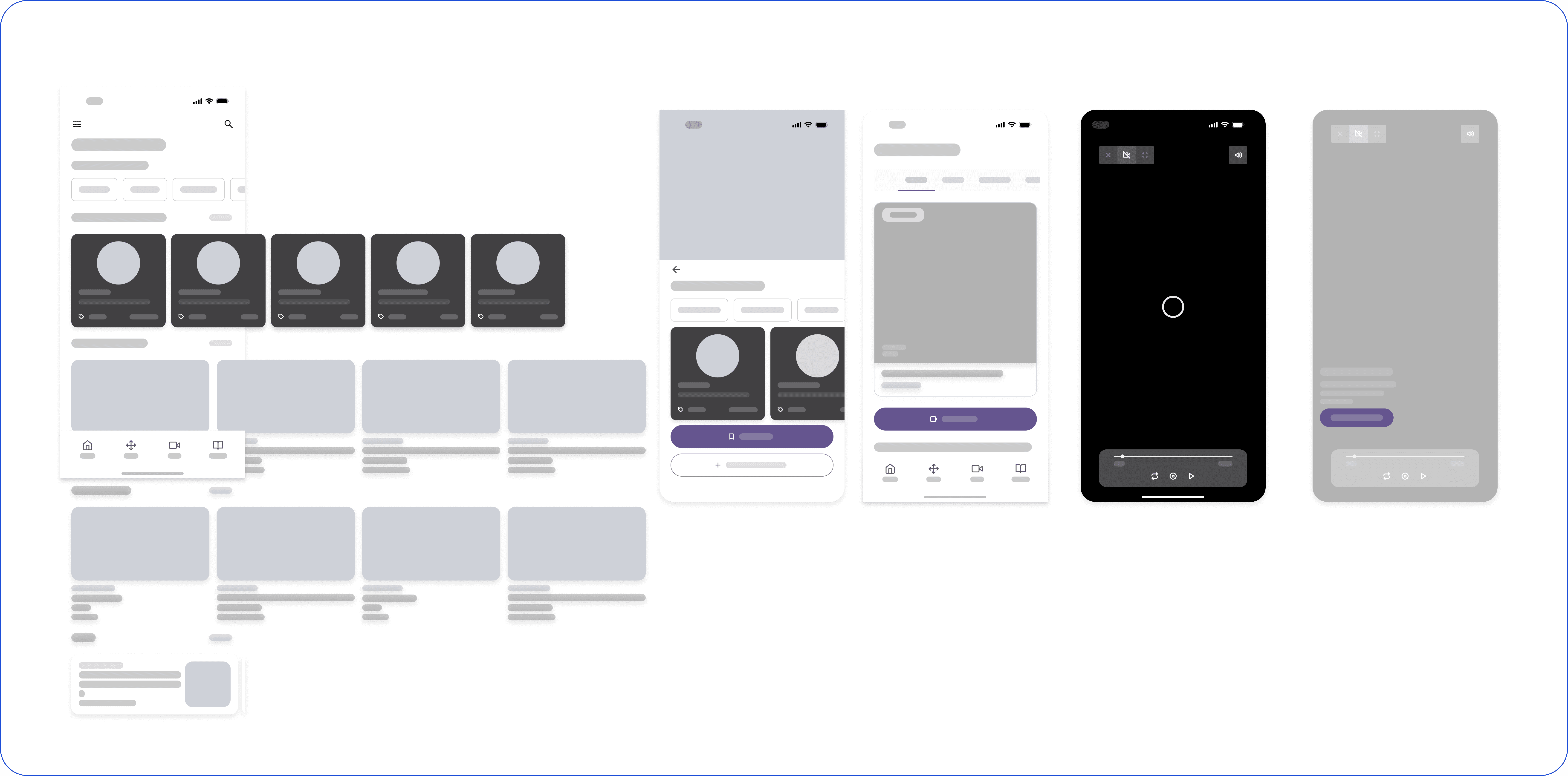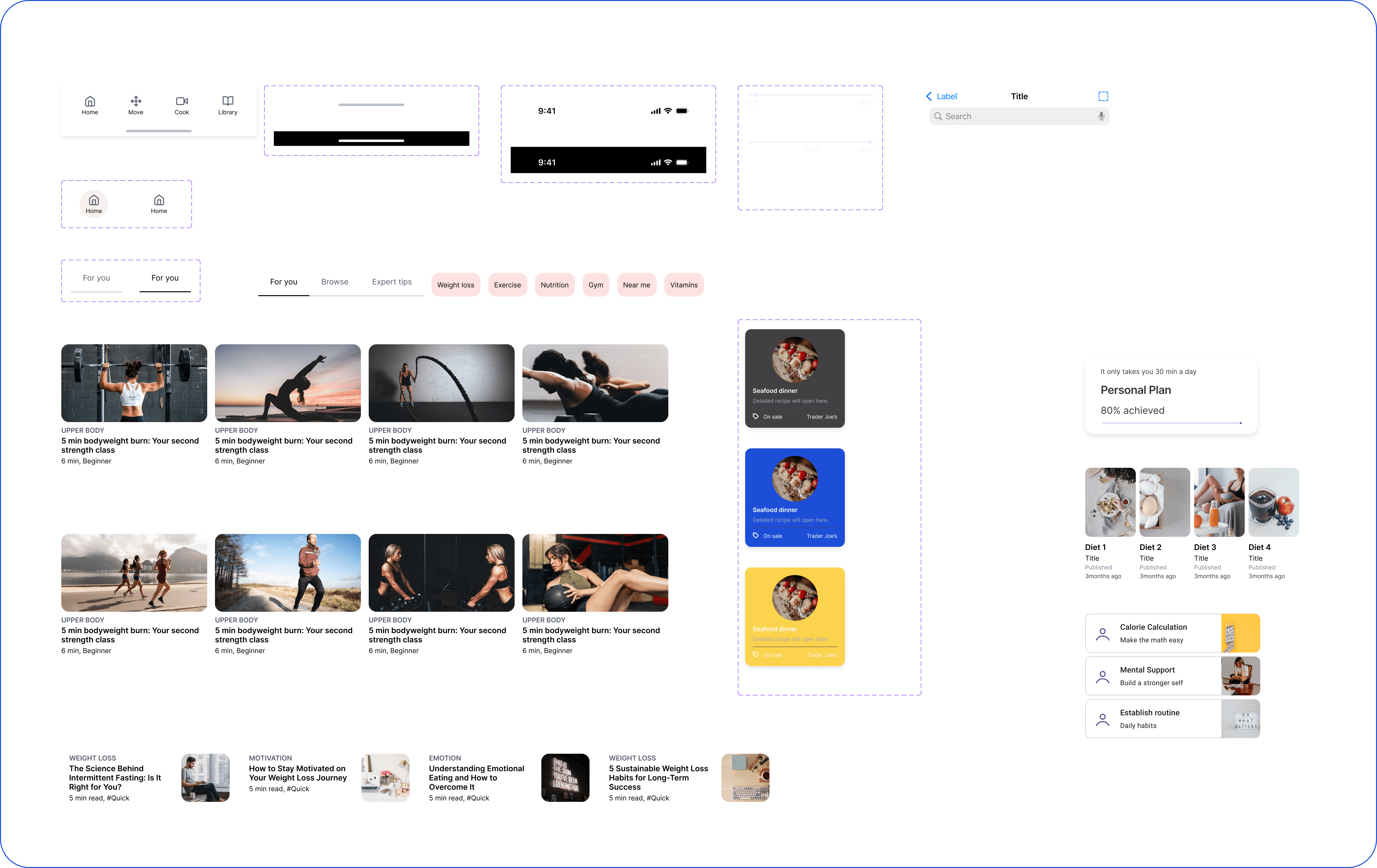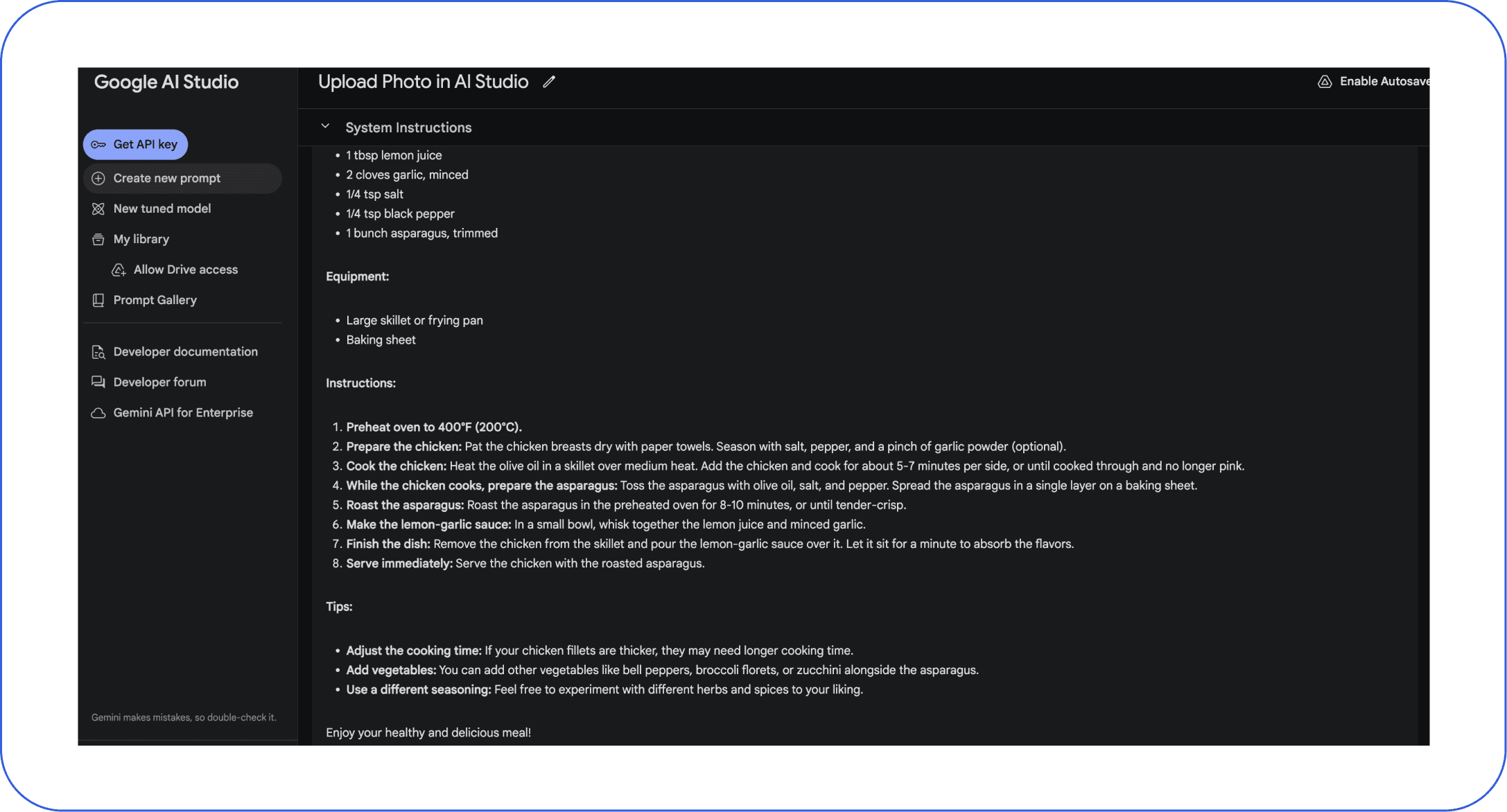How I reversed Type II Diabetes in 6 months focusing on convenience & affordability
Healthii
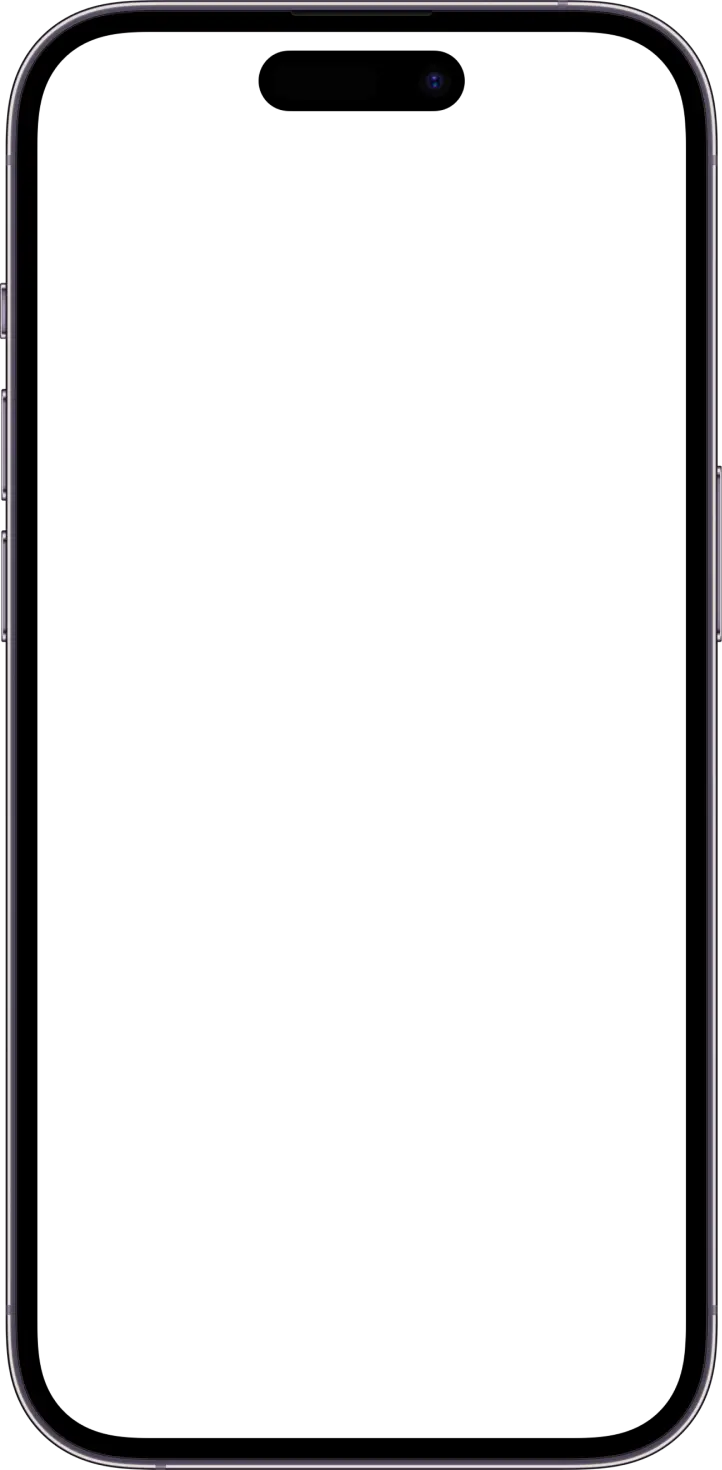
context
The 1 lbs veggie + 8500 steps/day magic
This project was inspired by my personal journey of reversing Type II pre-diabetes in six months during the COVID period in Chicago. By eating one pound of vegetables daily and exercising for 30 minutes, my blood test showed all negative results despite a sedentary lifestyle. Recognizing the challenges faced by individuals with obesity-related illnesses, especially those with financial constraints, I designed this app for busy people who lack the time or budget for traditional fitness solutions like gyms or personal trainers.
Product Market Fit
A product has PMF when it's solving a significant problem for customers, and they're buying, using, and recommending it in large numbers. PMF is a key factor in a business's growth and success, as it drives customer acquisition and retention. By this definition, the large number of individuals in the U.S. suffering from obesity highlights an unmet need—accessible, convenient, and affordable healthy meals.
define problem
Healthy lifestyle with no gym or organic foods?
How Might We provide convenient, affordable healthy meals & exercise options to busy individuals in low-medium income brackets?
Research shows that maintaining a healthy lifestyle in the U.S. can be expensive and time-consuming. There is a strong correlation between modest-to-low income levels and a higher prevalence of obesity-related illnesses, such as diabetes and heart disease.
solution
A guide of smart choices: live like a Tokyoite
I envisioned an app that 'nudges' users toward smarter food and exercise choices, inspired by my Tokyo lifestyle, while breaking barriers to healthy living through a focus on convenience and affordability. By using the average Tokyo resident's lifestyle as a benchmark, I aimed to educate and empower individuals in the U.S. who are traditionally excluded from the organic and healthy foods movement.
Feature #1 Main Page
Daily cooking videos that takes less than 15 minutes, based on user's main protein choice.
User insights
Users want to feel that they have their virtual personal chef creating tailored menu for them to follow along. The recipes are simple, affordable recipes with basic, versatile ingredients.
Daily exercise videos that takes less than 30 minutes based on user's location.
User insights
Users look for short, flexible workouts that can be done at home or at work, such as bodyweight resistance training or walking routines.
Feature #2 Library
The library serves as a toolbox for users to save their favorite videos and articles, encompassing a variety of topics such as cooking, exercise, and blog posts.
User insights
Users appreciate gentle reminders and progress-tracking tools that help them stay accountable. Users also want easy access to their favorite recipes, exercise routines so they can bring them up quickly.
Process
Empathize, Define, Explore, Test
I began by conducting user interviews in Chicago and emailed a concurrent survey to friends in Tokyo to validate my initial assumptions. Some of the results surprised me. It wasn’t that users in Chicago lacked awareness of the importance of a healthy lifestyle. Instead, the primary barriers for them were a lack of a support system, convenience, and affordability.
empathize
Chicago vs. Tokyo Comparison
On average, users in Chicago consume 3,600 kcal, while those in Tokyo consume 1,980 kcal daily, roughly twice as much. However, Chicago users walk only about one-third as many steps as their Tokyo counterparts (3400 vs 8500 steps).
I interviewed 5 persons currently living in Chicago (The median wage of my interviewees was $18/hour) I also sent survey to my highschool friends who currently live in Tokyo as benchmark.
Tokyo residents enjoy one of the lowest obesity rates, despite their long working hours. This is mainly supported by convenient and affordable healthy meals are readily accessible, and the need to take subway/bus to go everywhere.
Drawing on these insights, I designed a solution to empower individuals in Chicago facing similar challenges.
Business opportunities
Convenience & Affordability
My secondary research also revealed that people are more likely to pay for services that offer convenience or enhance cost-effectiveness. I have consistently prioritized these two factors in my designs. It's also shown that people are more likely to pay for health advice once they see results within months.
Competitive analysis
The Fitness App Landscape
Although many top-rated weight-loss, fitness, and recipe apps are readily available, most focus on a single aspect of health. Some emphasize meal prep, others prioritize exercise or live training sessions. I couldn’t find an app that tracks calorie intake, calories burned, and long-term bad cholesterol levels—let alone one that connects healthy living habits with lower insurance premiums.
Persona: Confined Workspace vs. Always on the Go
Armed with user insights and research findings, I focused on two user personas: the first represents individuals who work in confined spaces, while the second includes those who are constantly on the go. The goal of this product is to provide users with the convenience and affordability enjoyed by Tokyo residents, which are currently missing from Chicago counterparts.
Lisa, an office admin: Because she is a single mom she lacks the time for home-cooked healthy meals and cannot afford to shop at expensive organic grocery stores.
Marcus, a delivery driver: Always on the go, Marcus finds it challenging to prepare home-cooked meals. He mentioned that he typically has only a short amount of time between deliveries and would prefer to use that time for quick, efficient exercise if possible.
Information Architecture
I then developed an information architecture to map the process of finding tips and videos for cooking and exercise. Based on user feedback, I added library feature so users can save their favorite clips.
Minimum Viable Features
I then used the priority matrix to see what features are nice to have, what are must-haves, while considering factors such as difficulty to implement, impacts for users (Free plan) and for business (Premium plan).
Business Values: from Freemium to Subscription plan
The business model for this app begins with a Freemium plan to attract users. The goal is to gradually build user engagement through convenience and affordability. As users begin to see tangible results, they can be encouraged to upgrade to a Premium plan.
In the Free plan, users can browse and select content at their convenience. Upgrading to the Premium plan unlocks personalized workout and meal plans tailored to their unique needs.
ideation
Slowly Forming Habits and Influence Lifestyle
Because I wanted to gently nudge users into gradually adopting a healthier lifestyle over time, rather than forcing them into something difficult right away, I decided to make the app visually appealing. The idea is that even if users don't immediately follow the cooking or exercise routines, simply browsing content of healthy individuals cooking and exercising daily can subtly influence them. Over time, this exposure may inspire them to participate and eventually become part of that community. In other words, this app serves as your gentle personal chef and trainer.
Low-Fi Screens
test
I used mid-fidelity wireframes for initial testing with five users who had varying goals related to healthy eating and exercise. After introducing the app, I asked them to perform tasks such as browsing, finding recipes, selecting exercises to follow, and checking their progress. Through this process, I identified several user insights.
Initial User Research Goals
Evaluate Task Flows: Assess the ease with which users can navigate the app to complete key tasks, such as browsing, finding recipes, selecting exercises, and checking progress.
Identify Pain Points: Uncover challenges or barriers users face when interacting with the app features and functionality.
Understand User Preferences: Gather insights into users' expectations and preferences for features supporting healthy eating and exercise goals.
Test Content Usability: Determine the effectiveness and clarity of the app's content, including recipes and exercise instructions.
Gather Feedback for Iteration: Collect actionable insights to inform improvements in design and functionality for subsequent iterations.
Iterations Based on Early User Feedback
1.User Insight: Some users face challenges with limited data plans, which prevent them from smoothly streaming video content.
Design Iteration: To accommodate this segment, I introduced a Blog feature in the exercise section and text-based recipes in the cooking section. These alternatives ensure users can access valuable content in a low-bandwidth format, enhancing accessibility and usability.
2. User Insight: During user testing, I discovered that some individuals lack the time for grocery shopping, making meal preparation a significant barrier to maintaining a healthy lifestyle.
Design Iteration: To address this pain point, I introduced a feature called "Show Me the Substitute." This functionality suggests frozen, ready-made meal options from Trader Joe's as convenient alternatives to home-cooked meals, ensuring users can still make healthier choices despite time constraints.
Final Hi-Fi Screens
Components
UI / Style Guide
I created a UI style guide based with influence from existing Design Systems such as Material Design.
Next Steps
A Life-style app that connects habits to benefits.
I learned that small, incremental changes in user behavior are possible under the right conditions. For example, guiding fast-food consumers toward healthier frozen meals first, before transitioning to home-cooked options. To further enhance a "healthy lifestyle", the following features could be explored.
Gamification and rewards: healthy eating habits get rewarded with favorite restaurants coupons)
Link healthy lifestyles to lower insurance premium.
Future AI explorations
With Google AI Studio Gemini AI's free form prompt capabilities, users can take photos of what is currently in their fridge or sold in supermarket, get suggestions of their favorite easy-to-cook recipes.

